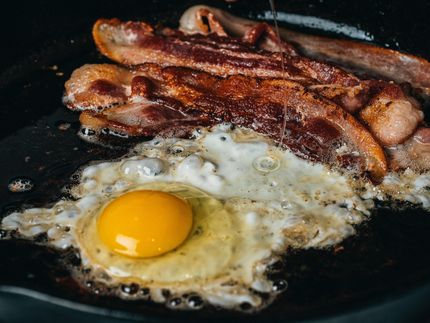Food activates brown fat
Brown fat consumes energy, which is the reason why it could be important for preventing obesity and diabetes. Working together with an international team, researchers at the Technical University of Munich (TUM) were able to demonstrate that food also increases the thermogenesis of brown fat, and not just cold as previously assumed.
Brown adipose tissue in humans has been the subject of numerous studies, as it has the exact opposite function of white adipose tissue, which stores energy in the form of storage fats called triacylglycerides. Specifically, brown fat burns the energy of the triacylglycerides (thermogenesis).
However, the activity of this physiologically highly favorable adipose tissue changes over time: It decreases with age, just as it does in obese individuals and diabetics. Hence, ways to heat up thermogenesis in brown fat are being sought which can be used to prevent obesity and diabetes.
Brown adipose tissue can be trained
To date, only one option has been acknowledged in this context: Cold-induced thermogenesis. "Studies showed that participants who spent hours in the cold chamber daily not only experienced an increase in the heat output of brown fat in the cold as they got used to the lower temperatures, but also an improvement in the control of blood sugar via insulin," reports Professor Martin Klingenspor, head of the Chair for Molecular Nutritional Medicine at the Else Kröner-Fresenius Center at TU Munich.
Carbohydrate-rich meal as effective as cold stimuli
For the current study by the University of Turku in collaboration with international experts, among them Professor Martin Klingenspor with his team from the Else Kröner-Fresenius Center of TUM, it was investigated how a carbohydrate-rich meal affected the activity of brown adipose tissue. "For the first time, it could be demonstrated that heat generation in brown adipose tissue could be activated by a test meal just as it would be by exposure to cold," said Klingenspor, summarizing the findings.
For the study, the same subjects were investigated twice: once after exposure to a cold stimulus, and a second time after ingestion of a carbohydrate-rich meal. In addition, a control group was included. Important markers for thermogenesis were measured before and after, which not only included the absorption of glucose and fatty acids, but also the oxygen consumption in brown fat. To do so, the researchers employed indirect calorimetry in combination with positron emission tomography and computer tomography (PET/CT).
"Ten percent of daily energy input is lost due to the thermogenic effect of the food," says Prof. Martin Klingenspor. This postprandial thermogenesis after eating comes not only from the obligatory heat generation due to muscle activity in the intestines, secretion, and digestive processes. There is apparently also a facultative component to which brown fat contributes.
The next step of the experiments will now be to find out whether this is energy that is simply "lost" or whether this phenomenon has another function. "We now know that the activation of brown adipose tissue could be linked to a feeling of being full," reports Klingenspor. Further studies will now be conducted to prove this.
Original publication
Other news from the department science

Get the food & beverage industry in your inbox
By submitting this form you agree that LUMITOS AG will send you the newsletter(s) selected above by email. Your data will not be passed on to third parties. Your data will be stored and processed in accordance with our data protection regulations. LUMITOS may contact you by email for the purpose of advertising or market and opinion surveys. You can revoke your consent at any time without giving reasons to LUMITOS AG, Ernst-Augustin-Str. 2, 12489 Berlin, Germany or by e-mail at revoke@lumitos.com with effect for the future. In addition, each email contains a link to unsubscribe from the corresponding newsletter.
Most read news
More news from our other portals
© 1997-2025 LUMITOS AG, All rights reserved

























































